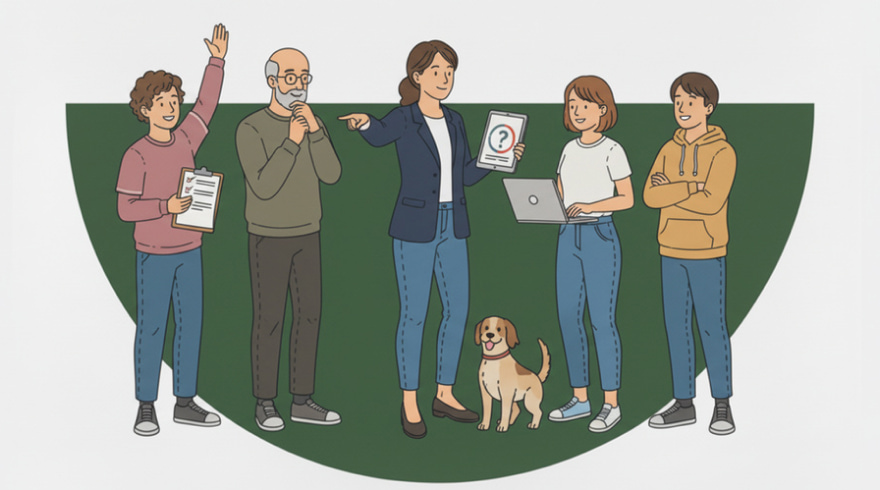Master Your Leadership Style: A Comprehensive Guide to Modern Assessment Quizzes
- 24 October 2025

Take Leadership Style Quiz: Are You a Leader?
Get StartedWhat Leadership Style Assessments Reveal and Why They Matter
Leaders shape outcomes, culture, and morale with every decision and every conversation. Yet even seasoned professionals can misread their default style, overuse a strength, or miss signals that a different approach would unlock better results. A high-quality assessment translates complex behavioral tendencies into clear language, connecting self-perception to observable impact. The result is a map of your dominant tendencies, your stretch behaviors, and the contexts where your style excels or underperforms. This insight empowers deliberate growth instead of trial-and-error leadership.
Rigorous questionnaires examine situational judgment, motivation patterns, and interpersonal dynamics, then align those inputs with well-researched style frameworks. Many readers discover that a free leadership style assessment quiz clarifies blind spots and validates natural strengths without costly coaching upfront. Because the results are framed in practical language, leaders can immediately apply them to decisions like delegating, coaching, or conflict resolution. Over time, repeating the same instrument tracks progress and shows whether new habits are sticking across different team scenarios.
Crucially, no style is inherently “better.” Command, coaching, collaborative, and visionary approaches all have valid use cases. What matters is intentionality: matching the right style to the right moment. When the stakes are fluid, leaders who can flex smoothly, while staying authentic, build trust and momentum. That flexibility comes from self-knowledge, structured reflection, and feedback loops that ground intuition in evidence.
- Diagnose strengths with objective language, not guesswork.
- Spot overused tendencies before they become liabilities.
- Translate insights into everyday behaviors your team will notice.
How These Quizzes Work: Methodology, Validity, and What to Expect
Well-designed assessments don’t just ask obvious questions; they probe trade-offs. You may be forced to choose between efficiency and inclusion, speed and risk management, or autonomy and oversight. These tensions simulate real leadership moments, producing a nuanced profile instead of a one-note label. Behind the scenes, psychometric techniques balance items, reduce bias, and ensure that different question phrasings still measure the same constructs. The best tools publish reliability figures and validation studies, increasing your confidence in the results.
The experience typically takes 7–12 minutes, with 20–40 items using Likert scales or situational choices. You’ll receive a style summary, development suggestions, and context cues indicating when each behavior thrives. For teams, an aggregate view uncovers complementary strengths and gaps, informing staffing, mentoring, and succession planning. For individuals, the most powerful moment is often the comparison between “how I see myself” and “what others experience,” which sparks targeted conversations about expectations and trust. In that spirit, a thoughtfully crafted leadership self assessment quiz encourages leaders to test assumptions and align intent with impact through data-informed reflection.
Strong instruments also include guidance on interpreting edge cases. For example, a highly decisive leader might score as visionary yet reveal coaching strengths under stable conditions. Conversely, a consensus-driven manager may become directive during crises. These subtleties prevent rigid labels and emphasize situational agility.
- Expect short, clear items that capture real-world trade-offs.
- Look for documented reliability and validation notes.
- Use team rollups to plan complementary role assignments.
Benefits: From Self-Awareness to Teamwide Performance Gains
Self-awareness is the gateway to consistent performance, but awareness alone is not enough. The real payoff appears when insights are tied to observable behaviors, how you run meetings, delegate decisions, coach underperformers, and respond to conflict. A good report converts abstract tendencies into specific experiments you can try this week, then measure next week. Organizations benefit as well: common language reduces friction, accelerates onboarding, and enables managers to coach with clarity instead of vague advice.
For solo contributors, a well-structured leadership self assessment quiz turns vague hunches into concrete development priorities. For first-line managers, insights inform how to balance accountability with empathy, especially when handling performance feedback. Senior leaders gain a portfolio view: which styles dominate the leadership bench, which are scarce, and where targeted development or hiring can create better balance. Because the process is repeatable, progress tracking becomes a habit rather than a one-off exercise, strengthening culture and decision quality over time.
Beyond individuals, teams leveraging shared insights often see measurable gains in psychological safety and execution speed. When teammates understand each other’s default responses, they preempt misunderstandings and design meeting norms that work for everyone. That alignment multiplies efficiency without sacrificing inclusion.
- Faster, clearer decisions with fewer surprises.
- Improved coaching conversations anchored in shared terms.
- Stronger succession planning aligned to strategic goals.
Quick Comparison of Core Styles and When to Use Them
Style labels simplify a complex reality, but they’re still useful for planning. Consider the central question: which approach fits the current goal, constraints, and risks? A product launch under tight deadlines may reward decisiveness, while a transformation initiative may require deep collaboration and patience. The table below contrasts common styles across typical leadership tasks so you can spot patterns and choose deliberately. Use it as a field guide, not a rigid rulebook, and adapt as conditions evolve and team capability grows.
| Style | Signature Behaviors | Best Use Cases | Watch Outs |
|---|---|---|---|
| Directive | Swift decisions, clear instructions, tight control | Crisis response, compliance-critical work, new teams | Can suppress initiative and reduce learning |
| Coaching | Guided questions, feedback loops, skill building | Talent development, stretch projects, succession | May feel slow when urgent outcomes dominate |
| Collaborative | Inclusive input, shared ownership, facilitation | Cross-functional alignment, change adoption | Risk of analysis paralysis without clear guardrails |
| Visionary | Compelling narrative, strategic framing, inspiration | Long-horizon bets, innovation, culture shaping | May overlook near-term constraints or execution detail |
| Servant | Enablement, empowerment, support-first stance | Stable teams, knowledge work, community building | Boundaries can blur; tough calls may be delayed |
As you review the matrix, consider your default response under stress, your preferred decision cadence, and your team’s maturity. Overreliance on a single style often signals a comfort zone rather than strategic choice. In practice, leaders blend elements, decisive calls with coaching follow-through, or collaborative design with crisp execution rules. When used thoughtfully, a structured leadership assessment quiz helps you pinpoint which blend fits your current portfolio of projects and the developmental needs of your people.
- Start with desired outcomes, then choose the style that accelerates them.
- Adjust as risk, speed, and stakeholder diversity change.
- Debrief with peers to test assumptions and reduce blind spots.
Interpreting Results: From Insight to Actionable Habits
Assessment readouts often include a headline style, secondary tendencies, and situational triggers. Treat the headline as a spotlight, not a label. Pull out three concrete behaviors to amplify and three to dial back, then define small experiments tied to real work. For instance, if you skew collaborative, pre-commit to decision deadlines in meetings. If you skew directive, schedule five minutes for open-floor input before you decide. Measure outcomes, not intentions, and review the effects with your team to refine your approach.
Momentum comes from rituals. Book a monthly reflection session, revisit your development plan quarterly, and ask a trusted colleague to observe one meeting with a specific lens. During reflection, a nuanced leadership style self assessment quiz reminds you that style flexes with context and constraints. Document your decision heuristics, when to invite dissent, when to speed up, and when to coach, and make them visible so teammates understand your operating system. Visibility builds trust and reduces friction during high-pressure moments.
Finally, integrate feedback from multiple sources: self-report data, 360s, engagement surveys, and performance outcomes. Convergence across sources strengthens confidence; divergence highlights growth opportunities. Either way, you get a roadmap that evolves with your role and your team’s maturity.
- Translate each insight into one micro-habit and one metric.
- Create explicit decision rules for recurring situations.
- Invite peer observation to keep growth accountable.
Best Practices for Taking the Quiz and Avoiding Bias
Accuracy begins with mindset. Answer based on typical behavior, not idealized intentions. If your context varies, calm weeks versus crisis weeks, note which state you had in mind while responding. Consistency matters because comparisons over time depend on similar frames of reference. Consider taking the assessment during a normal workweek rather than immediately after a high-stress sprint so the results reflect your common patterns rather than temporary spikes.
Reduce bias by pairing self-report with external feedback. Ask two colleagues to describe when you are most effective and when your style creates friction, then reconcile their observations with your report. Note differences across stakeholder groups; for example, engineers might experience your decisiveness differently than customer-facing teams. Document surprises and decide what experiments you will run next. If you lead a team, encourage everyone to take the instrument and share highlights, because shared language compresses the time needed to align on expectations and norms.
Practical tips improve reliability and usefulness. Set aside quiet time, avoid multitasking, and read each item carefully. Capture immediate reflections after you finish, including situations where you want to flex into a different approach. Return to those notes after two weeks to check which habits stuck and which need reinforcement.
- Answer for how you usually behave, not how you wish you behaved.
- Supplement self-report with a quick peer pulse.
- Schedule a follow-up to translate insights into calendar commitments.
FAQ: Common Questions About Leadership Style Quizzes
How accurate are leadership style assessments?
Accuracy depends on instrument design, validation, and your honesty when responding. Strong tools disclose reliability metrics and describe how items were tested across diverse populations. In practice, a validated leadership assessment quiz is better than an informal checklist because it balances items to reduce bias and provides guidance for interpreting edge cases. Pair results with feedback from colleagues to triangulate your true patterns.
How often should I retake the assessment?
Most leaders retest every 6–12 months, or after major role shifts. Retesting sooner can be useful if you are running a focused experiment, but too-frequent testing blurs real change with noise. Use the same instrument for comparability and track outcomes you care about, like decision speed, team engagement, or project throughput.
Can teams use the results without stigmatizing styles?
Yes, when leaders frame styles as situational tools rather than fixed identities. Establish a norm that every style has strengths and limits, then design team rituals, like decision deadlines, dissent windows, or coaching rotations, that respect those differences. Avoid weaponizing labels by focusing on behaviors and outcomes.
What if my context changes frequently?
Dynamic environments reward agility. Document your default tendencies, define trigger conditions for switching styles, and rehearse transitions before pressure rises. Keep a short checklist for crisis versus steady-state operations so the team knows how decisions will be made and communicated in each mode.
Do I need a coach to act on the results?
A coach accelerates progress, but you can start solo with a simple plan: pick three behaviors to amplify, three to reduce, and one metric per behavior. Share your plan with a peer, request observational feedback, and schedule monthly reviews. If you later add coaching, you’ll already have data and momentum.



